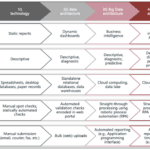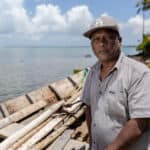Addressing the Unanswered Questions of Sustainable Development: How ‘Lean Experimentation’ Can Boost the SDGs
In 2015, the 2030 Agenda for Sustainable Development was adopted. At the heart of the agenda are the 17 Sustainable Development Goals (SDGs), which are comprised of priorities and specific targets that have been agreed upon by governments, the development sector, civil society organizations, the private sector and academia.
As the deadline for the achievement of the SDGs grows ever closer, the UN recently dubbed the next decade as a “Decade of Action” to accelerate progress toward the goals. With 10 years remaining to meet the SDGs – and many of these goals behind schedule – extraordinary efforts are now required to achieve the targets.
The Unanswered Questions That are Limiting Progress Toward the SDGs
Efforts towards achieving sustainable development are typically faced with difficult choices about where to allocate limited resources, and confronted with questions about which are the most effective interventions to achieve the intended results. For the past several decades – from the UN’s earlier Millennium Development Goals to the SDGs – hefty investments have been made through a range of development programs. These have frequently been designed based on assumptions about what seemed to be common sense interventions. But often, with no clear evidence, it was difficult to know which interventions were effective and which were not.
As efforts to get the SDGs on track gain momentum and draw increasing amounts of resources, we are running out of time to get answers to those questions. Development programs must understand which are the most effective solutions to the challenges articulated in the SDGs, and how these solutions can best be implemented to achieve the goals. We must also determine how those solutions that are proven to be effective can be accessed and adopted by others working to address similar issues.
The Value of ‘Lean Experimentation’
At Kopernik, these questions are driving us to develop, test and identify effective solutions –and also to share the results of our tests and learnings with others, so that promising solutions can be replicated more widely. Since 2016, we have been conducting “lean experiments” to find solutions that have the potential to solve the challenges articulated in the SDGs. Using an experimental approach, we target specific issues or unmet needs and test potential solutions that can address them.
The lean experimentation approach uses experiments that are typically rapid and small-scale to test solutions. Then it measures impact with control and treatment groups in an efficient manner to support underserved communities. This model is useful in assessing a wide range of interventions, from working with seaweed farmers to improve their drying process (and thereby to improve their livelihoods), to developing a behaviour change campaign to reduce marine plastic pollution, or supporting women micro-entrepreneurs in starting online businesses to expand their market access. The lean experimentation approach, albeit based on small data, has been generating strong signals about which solutions are promising – and which are not – in real-life settings.
Lean experimentation has value in identifying promising solutions to development challenges, and also in reducing the risk of adopting early-stage solutions for organisations and agencies (non-government or government) that may have less organisational flexibility or risk-appetite to conduct such experiments. Our approach aims to de-risk the adoption of potentially promising solutions for others.
A ‘Solutions Catalog’ for Development Interventions
Over the past four years, we have conducted more than 40 experiments to address social and environmental issues commonly faced by underserved communities across Indonesia. Our experiments range across five focus areas: water, sanitation and health; agriculture and fisheries; environment, energy and climate; micro-entrepreneurship; and education.
We have compiled our learnings and the results of our lean experiments in a platform – the “Solutions Catalog.” The platform showcases the specific issue that each experiment sought to address; the solution that was tested; the experiment design that was implemented to test the effectiveness of the solution; and the results of the experiment. The online solutions catalog uses an “Effectiveness Rating” to indicate the degree to which the intervention addressed the issue or unmet need.
The Solutions Catalog is intended to be a reference for organisations, agencies, companies and programs interested in addressing the unmet social and environmental needs of underserved people in the developing world. Solutions which are showing promise can be piloted at a larger scale to determine their effectiveness. Research institutions may view the Solutions Catalog as a depository of potential solutions to be tested at a larger scale, using more rigorous methods such as randomized controlled trials.
We believe that development sector stakeholders may gain insights from not only the successful experiments, but also from those that have been less successful. In this way they can get a sense of which interventions should be avoided to save time and resources – a particularly important priority as the SDG deadline grows nearer.
By sharing our results, both successes and failures, our intention is for promising solutions to be eventually adopted by other actors, to solve social and environmental challenges at a bigger scale. We strongly believe that complex challenges can only be solved by collective action and collaboration. Through the Solutions Catalog, we are determined to contribute to the Decade of Action – and to play a role in building a more sustainable, more inclusive and better world, as envisioned by the 2030 Agenda for Sustainable Development.
Toshi Nakamura is co-founder and CEO of Kopernik, a research and development lab for social and environmental challenges in Indonesia.
Photos courtesy of Kopernik.
- Categories
- Impact Assessment
- Tags
- impact measurement, research, SDGs



